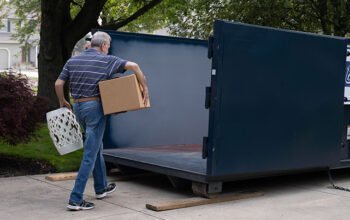Hobart, like many cities, has specific laws and regulations governing tree removal. These regulations are in place to protect the city’s greenery, maintain environmental balance, and ensure public safety. Before undertaking any tree removal project, it’s crucial to familiarize yourself with these rules. Generally, you’ll find regulations regarding the types of trees that can be removed, the permits required, and the acceptable reasons for removal.
Understanding Hobart’s Tree Removal Regulations
Permits and Permissions Required
In most cases, you’ll need a permit to remove a tree in Hobart, especially if it’s a significant tree or if it’s located on public property. The process for obtaining a permit usually involves submitting an application to the local council, detailing the reasons for removal and any replanting plans. It’s essential to follow this process diligently to avoid fines or legal consequences.
Environmental Considerations
Hobart prioritizes environmental conservation, and tree removal is no exception. Before removing a tree, consider its ecological impact. Trees contribute to air quality, provide habitat for wildlife, and prevent soil erosion. Therefore, it’s crucial to assess the environmental implications of tree removal and explore alternatives whenever possible. Additionally, replanting trees after removal can help mitigate the environmental impact and contribute to the city’s green spaces.
Reasons for Tree Removal in Hobart
Safety Concerns
One of the primary reasons for Hobart tree removal is safety. Trees that are diseased, damaged, or structurally unsound pose significant risks to property and human safety. In urban areas, falling branches or uprooted trees can cause damage to buildings, vehicles, and infrastructure. Therefore, removing hazardous trees is essential to prevent accidents and injuries.
Tree Health Issues
Sometimes, trees need to be removed due to health issues such as disease or pest infestation. Invasive pests like the European wood borer or diseases like Dutch elm disease can weaken trees and make them susceptible to failure. In such cases, removing the affected trees is necessary to prevent the spread of disease and preserve the health of surrounding vegetation.
Space and Aesthetic Reasons
In densely populated areas like Hobart, space is often at a premium. Trees that outgrow their surroundings or obstruct views may need to be removed to free up space or enhance aesthetics. Additionally, tree removal may be necessary to make way for new construction projects or infrastructure improvements. However, it’s essential to balance the need for tree removal with the city’s overall greenery and urban forest canopy.
The Process of Tree Removal
Assessment and Planning
Before initiating a tree removal project, it’s crucial to conduct a thorough assessment of the tree and its surroundings. This assessment helps identify any potential hazards, determine the best approach for removal, and develop a comprehensive plan. Factors such as the tree’s size, location, condition, and proximity to buildings or power lines are taken into account during this phase.
Execution of Tree Removal
Once the assessment and planning stages are complete, the actual tree removal process can begin. Depending on the tree’s size and location, specialized equipment such as chainsaws, cranes, or cherry pickers may be used to safely remove the tree. Trained arborists or tree removal professionals typically carry out this work to ensure safety and minimize damage to surrounding property.
Post-Removal Cleanup and Disposal
After the tree has been removed, the site must be properly cleaned up and debris disposed of responsibly. This may involve grinding the stump, chipping branches, and removing logs or wood debris from the site. Proper disposal methods, such as recycling or mulching, are employed to minimize waste and environmental impact. Finally, the area is restored to its original condition or prepared for replanting, ensuring that the tree removal process is completed safely and efficiently.
Hiring a Professional Tree Removal Service in Hobart
Researching and Selecting a Reputable Company
When hiring a tree removal service in Hobart, it’s essential to research and select a reputable company with a proven track record of quality work and customer satisfaction. Online reviews, recommendations from friends or neighbors, and credentials such as certification and insurance can help you narrow down your options.
Obtaining Cost Estimates and Quotes
Before committing to a tree removal service, it’s advisable to obtain cost estimates and quotes from multiple companies. These estimates should outline the scope of work, including tree removal, cleanup, and disposal, as well as any additional services or fees. Comparing quotes allows you to find the best value for your budget while ensuring that all necessary work is included.
Checking Insurance and Certification
When hiring a tree removal service, it’s crucial to verify that the company is properly insured and certified. Insurance coverage protects you and your property in the event of accidents or damage during the tree removal process. Certification from reputable organizations such as the International Society of Arboriculture (ISA) ensures that the company employs qualified professionals who adhere to industry standards and best practices.
DIY vs. Professional Tree Removal: Pros and Cons
Benefits of Hiring Professionals
While DIY tree removal may seem like a cost-effective option, there are significant benefits to hiring professionals. Professional tree removal services have the experience, expertise, and specialized equipment necessary to safely and efficiently remove trees of all sizes. Additionally, hiring professionals reduces the risk of accidents, property damage, and liability associated with DIY tree removal.
Risks and Challenges of DIY Tree Removal
DIY tree removal poses several risks and challenges, especially for inexperienced individuals. Without proper training and equipment, DIY enthusiasts may inadvertently cause property damage, personal injury, or environmental harm during the removal process. Additionally, DIY tree removal may lack the precision and efficiency of professional services, leading to incomplete or unsatisfactory results. Overall, the potential risks and challenges of DIY tree removal outweigh any perceived cost savings, making professional tree removal the preferred choice for most homeowners and property owners in Hobart.
Safety Measures During Tree Removal
Protective Gear and Equipment
Safety should be a top priority during tree removal, and proper protective gear and equipment are essential for preventing accidents and injuries. Arborists and tree removal professionals wear personal protective equipment (PPE) such as helmets, eye protection, gloves, and chainsaw chaps to protect against falling debris, sharp objects, and other hazards. Additionally, specialized equipment such as harnesses, ropes, and rigging systems are used to safely access and remove trees, especially in challenging or hazardous conditions.
Precautions to Avoid Accidents
Before initiating tree removal, it’s crucial to assess the site for potential hazards and take appropriate precautions to minimize risks. This may include identifying overhead power lines, securing nearby structures, and establishing clear communication and evacuation plans. Working with a qualified arborist or tree removal professional ensures that all necessary safety precautions are taken to protect workers, bystanders, and property during the removal process.
Importance of Hiring Experienced Professionals
Ultimately, hiring experienced professionals for tree removal is the best way to ensure safety and minimize risks. Trained arborists and tree removal professionals have the knowledge, skills, and experience to assess tree hazards, implement appropriate safety measures, and execute removal procedures safely and efficiently. By entrusting tree removal to qualified professionals, you can have peace of mind knowing that the job will be done right, with minimal risk to people, property, and the environment.
Conclusion:
Hobart tree removal is a multifaceted process governed by regulations, safety considerations, and environmental concerns. By understanding local laws, hiring reputable professionals, and prioritizing safety and sustainability, residents can navigate tree removal projects effectively while preserving the city’s greenery for future generations. Whether you’re addressing safety hazards, enhancing property aesthetics, or promoting environmental stewardship, responsible tree removal practices are essential for maintaining the beauty and vitality of Hobart’s urban landscape.




